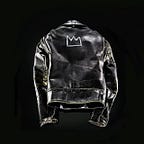Masculinity and femininity in modern fashion
‘Yo, fellas, is it gay to question the limits of masculinity?’ — GQ Corporate Lunch, Ep. #74.
Feminism does a great job in asserting gender equality in all areas, and clothing is no exception. Since the days of the suffragettes, women’s clothing has included trousers, T-shirts, jackets, double-breasted suits, cowboy boots, ties, and so on. There is not a single “purely male” item of clothing left, wearing which a woman would look strange. The same can not be said about “native female” clothing — men’s wardrobe was not replenished with dresses, skirts, bodysuits, or shoes with high heels. At the core of men’s clothing, there is also an emphasis on the features laid down by social roles of a primitive society: strength and stability, endurance, reliability, the ability to produce and maintain, the size of the bulge. Function is put above the appearance, and if something does not have an explanation, then it is urgently necessary to come up with it.
Recently, my source of inspiration have been based on women’s interpreting “originally male” clothing. And although in some social circles the borders are already being erased, for those with the binary system of men and women in mind such images still look like a quarrelsome rebellion, a combination of two polarities. I strive to recreate these images on myself, preserving that subtle change in the silhouette added by women, which changes the perception of men’s clothing: a higher waist, a slightly looser cut, the lines that no longer resemble stone cliffs, but the waves skirting them . I don’t want to look like a monolith, I want to look alive. I don’t want to be labeled “man”, I want to be myself. Unfortunately, the society does not agree with it yet.
So, when does the feminine become the masculine and vice versa?
What determines these changes?
Where is the line in gender identity and why do we feel it?
In 1974, Sandra Bem created Bem’s Open Sex Inventory, a test designed to determine the level of psychological androgyny. “In psychology, most studies accept individuals‘ perceptions of their gender roles as an axiom”. It is important to distinguish between gender role and gender identity: first concept describes the external social expectations in relation to a person in connection with his gender, while the latter — the internal self-perception of a person as a representative of a particular gender. In fact, the BOSI test allows to evaluate the masculinity/femininity of an individual, regardless of their gender. If the subject is strong in both masculinity and femininity, then they are considered androgynous, and if neither side is more developed than the other — undecided. The results of studies using this test have shown a correlation between the appearance of the subjects and their result.
Judith Butler, a gender theorist, writes in their essay: “Those who fail to live up to their gender role are usually punished. One can try to think of gender as a legacy of imposed roles and labels, rather than as a predetermined and exclusive structure, whether natural, cultural, or linguistic”. Division into men and women is made for the convenience of society, and those who are uncomfortable with it are often marginalized.
Some researchers have noted the influence of gender stereotypes: people are given information about gender roles that shapes their expectations of themselves, and as a result, behave accordingly. Nature does not decide where a man ends and a woman begins, nor does it determine why a pink angora sweater is a woman’s thing, and a turtleneck made of coarse Shetland wool is a man’s thing.
Gender is imposed on us by society and is nothing more than what society expects from a person, depending on his appearance.
Fashion is a business, and business will not cut rock the boat to dramatically change the discourse, losing more conservative buyers in sake of cultural progress. It is quite happy with the state of affairs at the moment and, slowly but surely, blurs the boundaries between genders. So far, editors are losing their minds from boys in heels, but more and more there are complaints about pseudo-gender-neutral collections of shapeless clothing of masculine silhouettes.
We are very vocal about the rejection of gender, but at the same time, skirts or tweed jackets under Chanel are not comme il faut for guys to wear. We say that we create unisex clothing, but we produce collections of hoodies and oversize jackets. We have made women’s fashion more masculine, but men’s wardrobe has not become more feminine, remaining at the same level of permissiveness it was 20 years ago.
The Rosenrot answers the question with a conventional approach. Women in suits and men in mini skirts are gender bending, a leap to the extreme, while real androgyny has nothing to do with binary and gender.
The best attitude to the new masculinity (and overall reaction to everything) was formed by the editor-in-chief of American GQ, Will Welch: “I know who I am and you know who you are; my vision of myself is who I want to be, and I respect your right to express yourself as you please”
A person has every right to look as they pleases and at the same time not lose his validity in the slightest degree.
The more I think about it, the more convinced I am that this is how it should be. Until we learn to think about a person regardless of gender, to stop using “he” or “she” without consideration of person’s self-identification, inconsistencies in other areas will also stick out and draw attention. And the fact that gender-neutral clothing is based on male silhouettes only emphasizes the power of patriarchy in society.
However,
the tougher the masculinity, the more fragile it is.
aint saint nor laurent yells at cloud starting from 2017.
